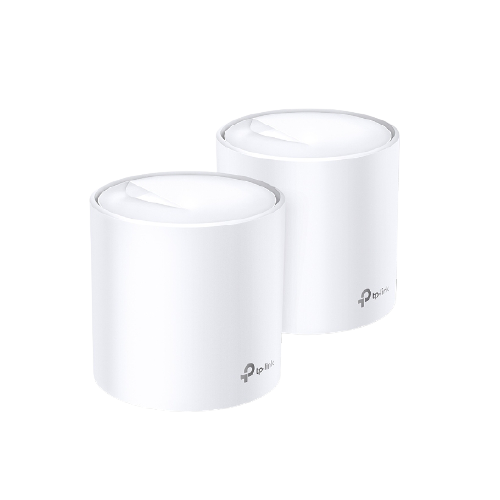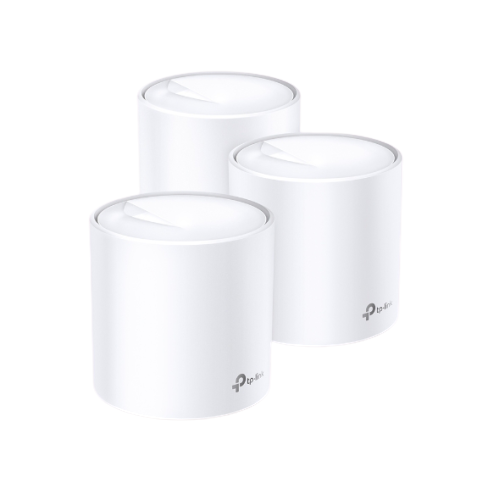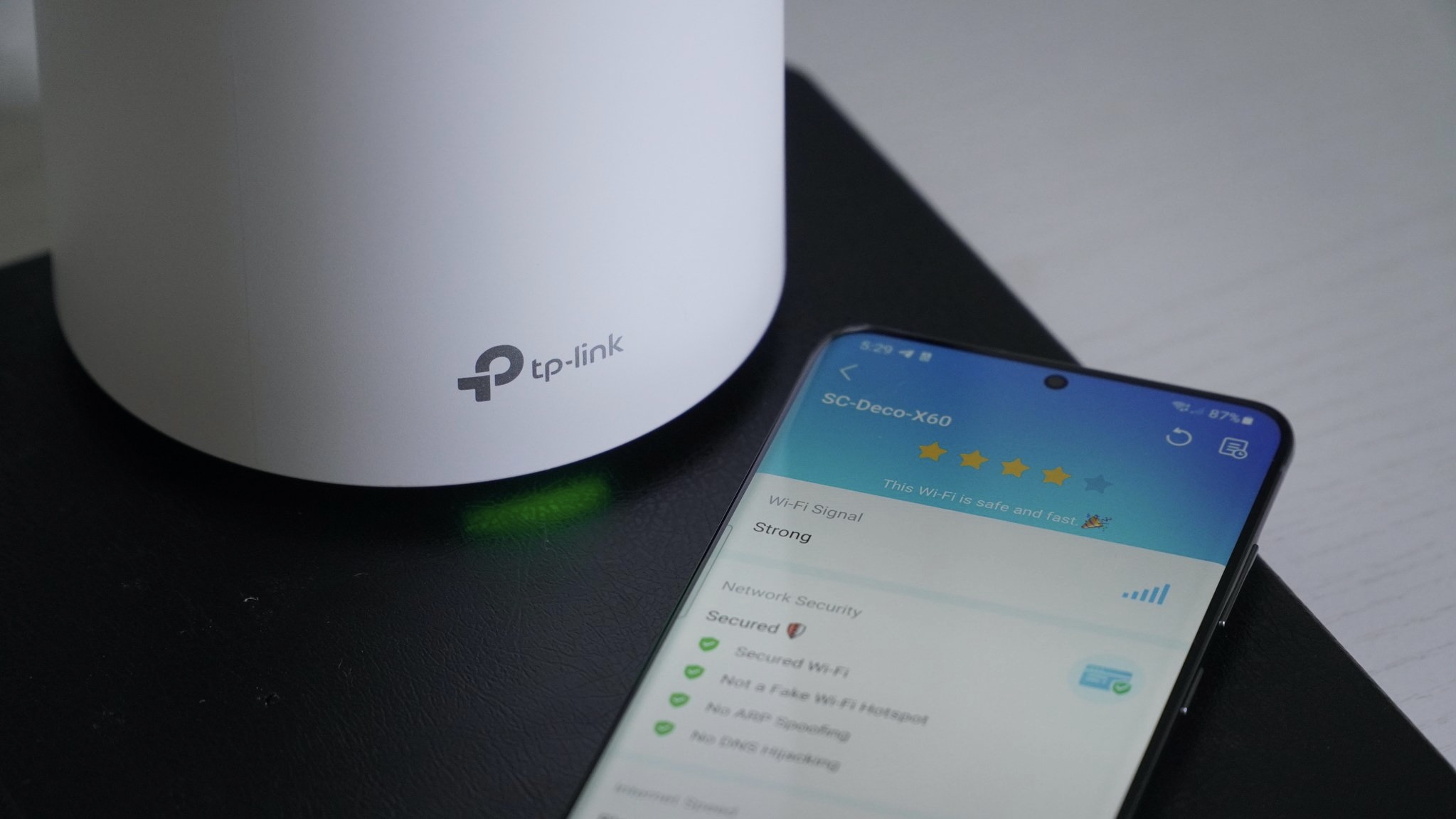TP-Link Deco X60 vs. Deco X20: Which Wi-Fi 6 mesh router should you buy?
There are a lot of cheap mesh systems to choose from and TP-Link's Deco line has some of the best values in the industry.

A stronger mesh
The TP-Link Deco X60 is a solid mid-range mesh system with two nodes covering up to 5,000 square feet with AX3000 Wi-Fi 6 for plenty of mesh speed. TP-Link includes its robust HomeCare software for free with advanced parental controls and enhanced security making it a great choice to get your family connected.
For
- Fast AX3000 speeds
- Wi-Fi 6 supported
- Dual gigabit Ethernet ports
- Compact size
- HomeCare is included
Against
- Dual-band isn't optimal for mesh

Greater flexibility
AX1800 speeds should be more than enough for most people even though mesh speeds will be closer to 500Mbps. Still, with three nodes providing up to 5,800 square feet of coverage, the Deco X20 is a great choice for someone looking to cover a large house with decent speeds. HomeCare is also included for improved security and controls.
For
- AX1800 is fast enough for most
- Wi-Fi 6 supported
- Dual gigabit Ethernet ports
- Compact size
Against
- Not fast enough for gigabit internet
- Dual-band connection will struggle under heavy loads
The TP-Link Deco X60 is a more capable mesh setup with double the speed at 5GHz compared to the X20. This extra speed will help the mesh deliver gigabit speeds to keep up with a fast connection. With 5,000 square feet of coverage, it should cover most homes with ease. The Deco X20 is very similar but will need to share its 1201Mbps 5GHz connection between the mesh backhaul and connected devices. For most people, it will be fast enough but with the lackluster coverage bump with three units, the Deco X60 is a sensible upgrade.
TP-Link Deco X60 vs. Deco X20 Is AX1800 enough in a mesh system?
A mesh router should be significantly faster than the traditional router it replaces. This is because the mesh nodes need to keep connected to one another and in practice, can cut your link speed in half. The Deco X20 should be suitable for a 500Mbps connection but if you have something faster or think you will get that upgrade in the next couple of years, investing in the upgrade Deco X60 will be worth every penny for the same coverage.
| Header Cell - Column 0 | TP-Link Deco X60 | TP-Link Deco X20 |
|---|---|---|
| Wi-Fi standard | Dual-band Wi-Fi 6 | Dual-band Wi-Fi 6 |
| Wireless speed | AX3000 (2402Mbps at 5GHz, 574Mbps at 2.4GHz) | AX1800 (1201Mbps at 5GHz, 574Mbps at 2.4GHz) |
| Ethernet ports | 2 per node | 2 per node |
| Included software | HomeCare | HomeCare |
| Dimensions (inches) | 4.33x4.33x4.99 | 4.33x4.33x4.99 |
TP-Link Deco X60 vs. Deco X20 Dual-band performance

The Deco X20 comes in at a respectable AX1800 and for a standard router, that's enough speed for just about anyone. The problem is when you start adding nodes to your mesh. A mesh network works by allowing each node to communicate with the others wirelessly. TP-Link's software will allow the nodes to choose the fastest possible link speed, typically the 5GHz band, and leaves the remainder of the capacity to connected devices.
The max link speed of the 5GHz connection is 1201Mbps with the X20's two streams. With a device connected to the 5GHz band, that speed will be shared cutting your speed by about half. The remaining 600Mbps is still quick but keep in mind that's in ideal conditions with no interference and a perfect connection. Reality will likely be closer to 500Mbps for the most part. If you're looking to support a faster connection, the Deco X60 doubles the data streams to four at 5GHz taking the connection speed up to 2402Mbps. This will allow much closer to gigabit speeds in a mesh.
This is all a long way of saying that if you want to make the most of a fast connection, the Deco X60 is worth the upgrade. As we saw in our Deco X60 review, every little bit of overhead can help keep speeds high when you live in an area with lots of interference. If you just want great coverage and connection consistency, the X20 should be more than capable of delivering.
Finally, each of these nodes has dual gigabit Ethernet ports. On the main router, one will be used to connect to the modem. Dropping a node in a computer room or a media center can be a great way to get a strong wired connection where you need it without running Ethernet in your home. If you already have Ethernet runs, you may be better off thanks to wire backhaul capabilities. In short, you can run an Ethernet connection from one node to another improving the connection quality and freeing up wireless resources for devices.
TP-Link Deco X60 vs. Deco X20 Coverage
Per node, the Deco X60 has better coverage but is mostly sold as a two-pack lowering the max coverage metric. The X60 pack with two nodes offers up to 5,000 square feet of coverage, though you'll likely get a bit less due to interference depending on how your home is constructed and laid out. Homes with concrete or brick walls, for example, will have much poorer coverage results than wood and drywall.

The Deco X20 is typically sold as a three-pack and will cover up to 5,800 square feet, or around 2,000 square feet per node. The loss is down to the small amount of overlap you'll need to make sure your nodes can effectively communicate with one another. This is one of the key considerations when you decide if you should get a mesh or standalone router as the latter often has greater coverage thanks to larger antennas.
Both systems can be expanded with more Deco units down the line if you find you don't have enough coverage. You should be sure to get Decos with the same specifications if at all possible to make sure you don't lose speed due to a weak connection.
TP-Link Deco X60 vs. Deco X20 Extra features
HomeCare is one of the most compelling TP-Link features and for many families, it may change the way you think about home networking. Best of all, it's included in both of these Deco systems. Routers are getting more powerful all the time and the software running on them has been able to add real value. HomeCare is a software package that includes quality of service software, antivirus protection, and parental controls.
Quality of service is included with just about any new router you buy and is designed to keep your connection working well even with many simultaneous connections. In practice, it makes sure you can make your Google Meet or Microsoft Teams call in good quality even if someone in your house has decided to download and PS5 game and stream Twitch TV.
HomeCare's antivirus protection is not a replacement for standard security software or more important, safe browsing habits, but it's nice to have an extra layer of security in place. It can look for malicious website access, block unwanted external connections, and even quarantine a potentially infected device.
Last but not least, parental controls are one of HomeCare's specialties and outclasses much of the competition that often requires a subscription service. HomeCare's parental controls not only allow site blocking but also specific profile control. This means that you don't have to block a site for all users and devices in your home. You can set up profiles for every family member with specific time restrictions and site blocking.
TP-Link Deco X60 vs. Deco X20: Which should you buy?
There are lots of Wi-Fi 6 mesh routers to choose from and while the Deco X20 is consistently one of the best TP-Link routers, its slower speeds will be a concern to some, especially those looking to make the most of a gigabit fiber connection. Still, the Deco X20 is a great set and will most likely be a great improvement over an older Wi-Fi 4 or 5 setups and should provide a great coverage boost for smart homes and is one of the best Wi-Fi 6 mesh systems you can buy.
For most people, the Deco X60 is the right fit and one of the best values in Wi-Fi 6 mesh. While it would be nice if it had a tri-band connection for a dedicated backhaul, it should have plenty of speed to keep up with most people including those with fast connections. Compact nodes with dual Ethernet ports also allow for enough connectivity for most home setups. The TP-Link Deco X60 is a great value and should work great for most people.

Gigabit speeds with solid coverage
With AX3000 speeds, the Deco X60 has double the 5GHz speed of the Deco X20 meaning the system can support internet speeds up to 1Gbps. Even with a full mesh deployed, speeds should support 4K streaming, large downloads, and browsing for a large family.

Great coverage with adequate speeds
The Deco X20 with three nodes can cover up to 5,800 square feet at AX1800 speeds. While the speed won't hold up for a gigabit connection, it will be more than fast enough for most families with plenty of overhead for HD streaming and web browsing.
Be an expert in 5 minutes
Get the latest news from Android Central, your trusted companion in the world of Android
When Samuel is not writing about networking or 5G at Android Central, he spends most of his time researching computer components and obsessing over what CPU goes into the ultimate Windows 98 computer. It's the Pentium 3.

